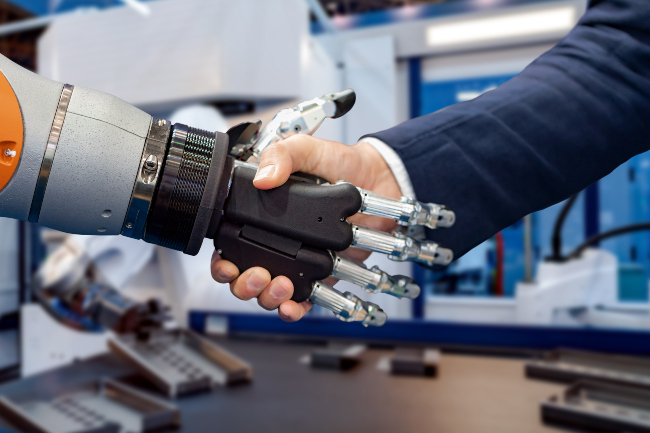Automation Versus Human

The fourth industrial revolution has advanced from initial plans and political programs to the stage of implementation across industry fields, process digitization and integration across enterprises. Physical objects can have their virtual representations of themselves, in the form of digital twins and based on them, it is possible to predict the development and test various possible scenarios with all of the impacts on the monitored variables. Automation plays a key role when making decisions and controlling processes.
A huge amount of data generated by the devices and processes of the enterprise itself, including all of the external partners and systems, come along with that. These data then should serve as a foundation for better and quicker strategic decision making. The potential of using these data when improving the effectiveness of processes is obvious whether we use them for extending the lifespan of machines based on predictive maintenance or for increasing the output volume thanks to greater process effectiveness.
Everything has its limits
However, even when it comes to Industry 4.0, it’s necessary to realize that everything has its limits. Including automation and the effort to quantify everything under any circumstance. The most progressive enterprises won’t ever stop appreciating quality human work and talent and are able to make the most out of the combination from automation and human abilities.
A qualified person is irreplaceable
The thought that automation is able to fully replace engineers in factories is complete sci-fi. Much more sophisticated algorithms would be needed. No matter the number of metrics and variables the machine is able to process and evaluate, human experience, expertise and intuition can’t yet be fully replaced by any digital tools.
For example, production facilities of the same type are built from the same components and therefore, have approximately the same outcomes. But at the same, individual differences. Components can fit together in different ways and make a different sound because of the location of the machine in various space types. The data gathered from these devices won’t probably be able to affect these differences which will lead to distortion of the whole image. On the contrary, an experienced operator is able to find out there’s something wrong based on even little changes of vibration, sound or the whole behavior. The data analysis is a great resource, but only a qualified employee is able to include these data in the context.
Human cooperating with technology
A qualified employee is able to fill in the gaps in existing data analyses. They are able to make the most out of these data, because they are able to use them to create a complex image and make decisions based on it. And they can also understand the behaviour of their fellow workers much better (than any machine). The entrepreneurs that want to operate their companies really effectively must not underestimate the influence of individual employees on the business performance and even all internal processes. The combination of modern technologies with human abilities bring the best of results.
Related articles
Jun 7, 2024
DJI introduces its first delivery drone
DJI introduces its first delivery drone
Jun 7, 2024
5 expert insights into the world of dynamic simulations and logistics
5 expert insights into the world of dynamic simulations and logistics
Apr 2, 2024